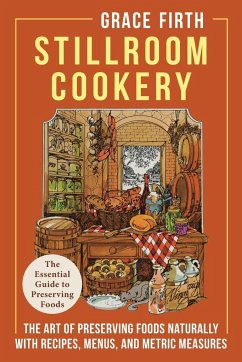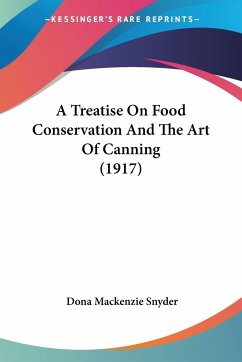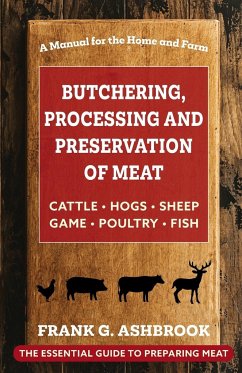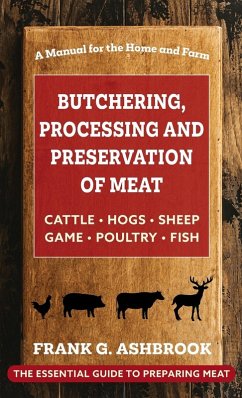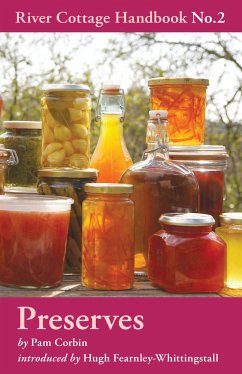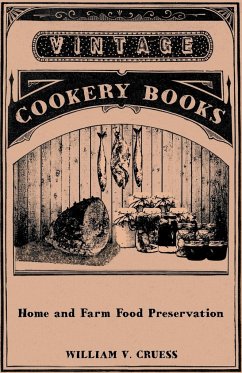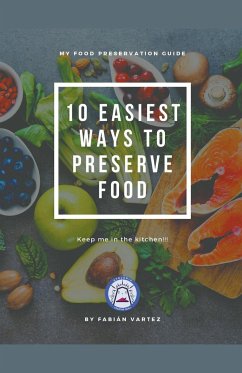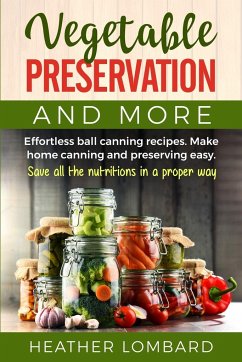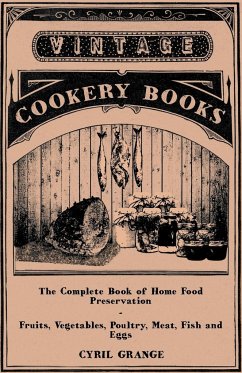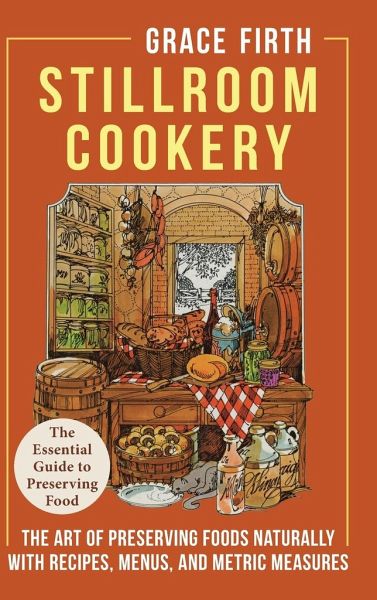
Stillroom Cookery
The Art of Preserving Foods Naturally, With Recipes, Menus, and Metric Measures

PAYBACK Punkte
16 °P sammeln!
Prepare and Preserve Food Using Time-Tested Techniques Living with her grandparents as a child in the 1930s, Grace Firth learned to garden, preserve, and cook food the old-fashioned way. Back then, a home's stillroom chamber was used as a sort of kitchen prep where all manner of delicious foods and beverages were made using a variety of time-tested techniques to keep food from spoiling-all without using harmful chemicals or preservatives. In Stillroom Cookery, Firth passes along the wisdom of time-honored preserving practices, revealing practical, inventive, and proven methods for natural pres...
Prepare and Preserve Food Using Time-Tested Techniques Living with her grandparents as a child in the 1930s, Grace Firth learned to garden, preserve, and cook food the old-fashioned way. Back then, a home's stillroom chamber was used as a sort of kitchen prep where all manner of delicious foods and beverages were made using a variety of time-tested techniques to keep food from spoiling-all without using harmful chemicals or preservatives. In Stillroom Cookery, Firth passes along the wisdom of time-honored preserving practices, revealing practical, inventive, and proven methods for natural preservation, storage, and preparation of food. Each chapter focuses on fundamental stillroom skills and recipes, such as curing meats, dehydrating foods, drying, smoking, fermenting, pickling, canning, preserving sweets, baking bread, distilling vinegars, concocting savory sauces, and making cheese and other milk products. There is also a beverage chapter that covers brewing beer and making wine. Additionally, a chart in the appendix plots out a garden planting plan for a family of five. Firth writes in a simple and engaging style that comes from years of experience. She encourages the use of tested techniques on classic food staples as well as a flexible approach that is adaptable to changing dietary trends. Like a treasure chest full of priceless surprises, this classic cookbook is a must-have resource for the library or kitchen of anyone interested in living sustainably, eating well, and staying healthy. It presents a realistic, practical vision of living the good life. In the dedication to Stillroom Cookery Firth expresses her sentiment which animates the whole work: "that people will understand old ways as they reach for tomorrow." "I have always gardened, preserved and cooked in the old ways though I did not realize that I was different from other homemakers until the 1960s. My isolation from the mainstream can be explained. As a child I lived with my grandparents, both sets of whom were older than average, and I went directly from high school to college summer school. During college I was poor. After graduating from the University of Southern California, I traveled to Alaska where living conditions were somewhat old-fashioned. Once married, I got involved with moving to Virginia, taking care of three youngsters and writing historical novels about my beloved Alaska. My husband and I purchased "a little bit of Alaska," a small wilderness tract near the mountains in Virginia, where we spent all our weekends and holidays. Although I was secretary of a variety of community associations, I had little housewifely interaction and rarely went shopping. I remained unaware of the changes in American cooking and eating habits until I returned to graduate school in 1968. From the young men and women, I learned that my way of doing and their aspirations for the good life had a lot in common. My life reflected that which I had learned in my grandmothers' stillrooms, gardens and homes; the young people were putting their faith in the old ways and in the goodness of the earth." -GRACE FIRTH This book is also available from Echo Point Books as a paperback (ISBN 1648371345).



